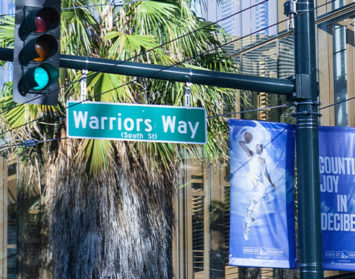Two months ago, this column discussed at some length the various operating expenses involved in leasing office space — costs over and above the monthly per-square-foot lease rate. We referred to them as those “something extra” costs that are in addition to the so-called “full service” leases tenants are asked to sign.
The July 18 column was chock full of numbers with dollar signs attached that ranged from the extra costs levied by landlords for higher-than-normal utilities to unforeseen increases in the tenant’s share of the building’s property taxes, brought about when the building sells for an inflated sales price during the time the tenant is an occupant.
It was enough to scare the bravest of tenant souls, but unfortunately the space constraints of this newspaper column didn’t allow for a full accounting of all the additional costs tenants face.
There are more. For one, consider the highly prized and increasingly endangered parking space. Parking throughout much of the San Diego metropolitan area has become a scarce commodity in the past several years, and is destined to become even more so in the future.
Downtown San Diego is no longer the only venue without adequate parking. Much of the rationale for developing Mission Valley, University Town Center and other locales as office submarkets centered on the premise that these locations would be able to offer free and adequate parking — something well beyond the wildest promises of downtown office market advocates. As a result, an increasing number of tenants, including assorted law firms, flocked to the city’s northern environs.
Today, Mission Valley, the Golden Triangle, Sorrento Mesa/Valley and even as far north as the Del Mar Heights/Carmel Valley area are teeming with office parks, complexes, buildings and the like. Parking facilities, however, have not even begun to keep up with the number of office suites in those areas. There are not nearly enough peripheral lots and, with the exception of those parts of Mission Valley served by the San Diego Trolley, there’s inadequate mass transit even for those willing to ride public transportation.
It’s supply and demand big time for office tenants throughout the region who need or want to provide parking for clients and employees. Parking can add another 75 cents per square foot to the monthly per-square-foot rent, assuming there are four employees per 1,000 square feet of leased space in a downtown office building. It’s not quite that high in the Golden Triangle area, but not that much lower.
Let’s restate the financial impacts in terms of individual parking spaces. The unreserved parking space downtown now typically costs $180 per month. Add another $70 per month per space — $250 — if you want it designated as a reserved space. It’s a little more merciful in the University Town Center area, where unreserved spaces fetch $75 per month and reserved spots run $175 per month each. This should be somewhat alarming, considering UTC parking was free until only a few years ago — and somewhat prophetic for Del Mar Heights, where unreserved spaces are still free — for now.
It’s one thing for a commodity to increase in price as long as it remains available. However, not only have parking spaces soared in price in recent years, they also are now becoming increasingly rare. For one thing, many downtown surface lots are falling prey to redevelopment.
This doesn’t sit all that well with office tenants and clients accustomed to driving to and from work. I’m not into most conspiracy theories, but the fact that so many of the city’s surface lots are being taken out of the parking inventory in the name of redevelopment does seem to be a dream come true for various bureaucrats and other social engineers who have longed for the day when automobiles will no longer be the primary mode of transportation.
Clearly, office tenants need to assess very carefully the parking needs for their clients and employees and to make parking costs and availability a major determinant in where they locate their places of business. Downtown and areas of Mission Valley, to name two submarkets, do offer some public transportation alternatives that can be used by a tenant’s employees who don’t need a car. But the fact remains not everybody, certainly not clients and customers, are going to ride public buses and trains to and from a tenant’s place of business. There will always be a continuing need for automobile parking.
Unfortunately, there will also continue to be higher parking costs and less availability in the not-too-distant future; two conditions that could one day doom the parking space to the ranks of electricity, gasoline, water and other necessities that are in short supply.
A parking crisis? You can bet on it.
Jason Hughes is founder of Hughes Marino, an award-winning commercial real estate company with offices across the nation. A pioneer in the field of tenant representation, Jason has exclusively represented tenants and buyers for more than 30 years. Contact Jason at 1-844-662-6635 or jason@hughesmarino.com to learn more.









